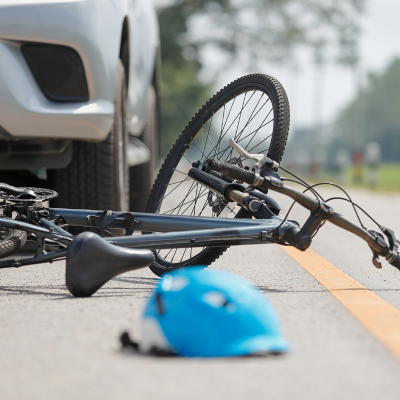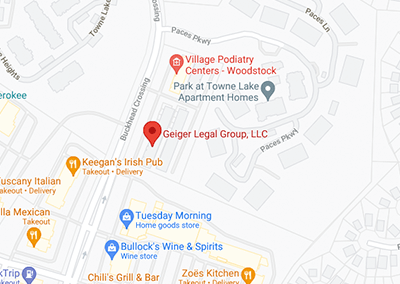
According to the Centers for Disease Control and Prevention (CDC), “nearly 1,000 bicyclists die and over 130,000 are injured in crashes that occur on roads in the United States every year.” Because of their complete exposure in the event of an accident, bicyclists often suffer some of the most devastating injuries we see in our practice as personal injury attorneys.
If you were injured in a bicycle accident at little to no fault of your own, the best thing you can do after seeking immediate medical attention is to have your case reviewed by an experienced personal injury lawyer. The legal team at Geiger Legal Group, LLC, is ready to evaluate your accident, inform you of your legal rights, and fight for your right to full and fair compensation from the at-fault party. Contact us to schedule your free, no-obligation consultation with a skilled bicycle accident lawyer today.
What Are Some Common Injuries Sustained in Bicycle Accidents?
Bicycle accidents are particularly dangerous because, unlike riders in an enclosed vehicle, bicyclists have nothing to shield them from the full impact of an oncoming vehicle. This leaves them extremely vulnerable to catastrophic injuries. Common bicycle accident injuries include:
- Dislocated, fractured, and broken bones
- Traumatic brain injuries (TBIs)
- Spinal cord injuries (SCIs), including full or partial paralysis
- Soft-tissue strains, sprains, and tears
- Bruises, lacerations, and puncture wounds
- Internal bleeding and organ damage
- Scars, permanent disfigurement, and loss of limb
- Burn injuries, including “road rash”
- Post-traumatic stress disorder (PTSD)
- Wrongful death
Common Driving Behavior that Endangers Bicyclists
Bicyclists and motorists are each responsible for avoiding negligent behavior that endangers other road users. Negligence arises when we fail to use reasonable care to avoid causing harm to others. When this failure causes an accident, injured victims may be entitled to legal compensation from the at-fault party. Common behavior from drivers that may amount to negligence includes:
- Swerving into a bicycle lane
- Passing bicyclists too closely
- Changing lanes without checking for bicyclists
- Cutting a bicyclist off on the roadway
- Following too closely behind a slow-moving bicyclist
- Turning without checking for approaching bicyclists
- Failing to yield to a bicyclist at an intersection
Rights and Responsibilities of Bicyclists in Georgia
Though bicyclists are generally more at risk of sustaining serious injuries in the event of an accident, it is worth reemphasizing that they are responsible for following the rules of the road and avoiding negligent behavior. Importantly, a bicyclist’s failure to use reasonable care may eliminate or cut into the compensation they are owed for injuries sustained in an accident.
It is also important to recognize that bicycles are legally classified as vehicles in Georgia. Accordingly, bicyclists are subject to most of the same rules of the road as drivers of motorized vehicles. Additionally, there are a number of safety regulations that apply specifically to bicyclists. As summarized by the Georgia Governor’s Office of Highway Safety, these regulations require that bicyclists:
- Wear a helmet if they are under 16 years old.
- Never transport more people on a bicycle than it is equipped or designed to handle.
- Ride as close as practicable to the right side of the road except when avoiding hazards or turning left, when traveling at the same speed as adjacent traffic, when a lane is too narrow to share with a car, or when passing a stopped vehicle or one traveling in the same direction.
- Refrain from carrying a bundle, package, or other article that prevents at least one hand from staying on the handlebars while operating their bicycle.
- Ride only on a regular and permanently attached seat.
- Refrain from permitting someone to ride on the handlebars of the bike.
- Refrain from attaching a bicycle to any vehicle on the road while riding it.
- Refrain from transporting a child under one year old as a passenger while riding on a roadway, bicycle lane, highway, sidewalk, or bike path, unless the child is in an infant sling or bicycle trailer according to the manufacturer’s instructions.
- Equip the bicycle with a light on the back that emits a red light visible from at least 300 feet to the rear and a light on the front that emits a white light visible from at least 300 feet to the front while operating their bicycle at night.















